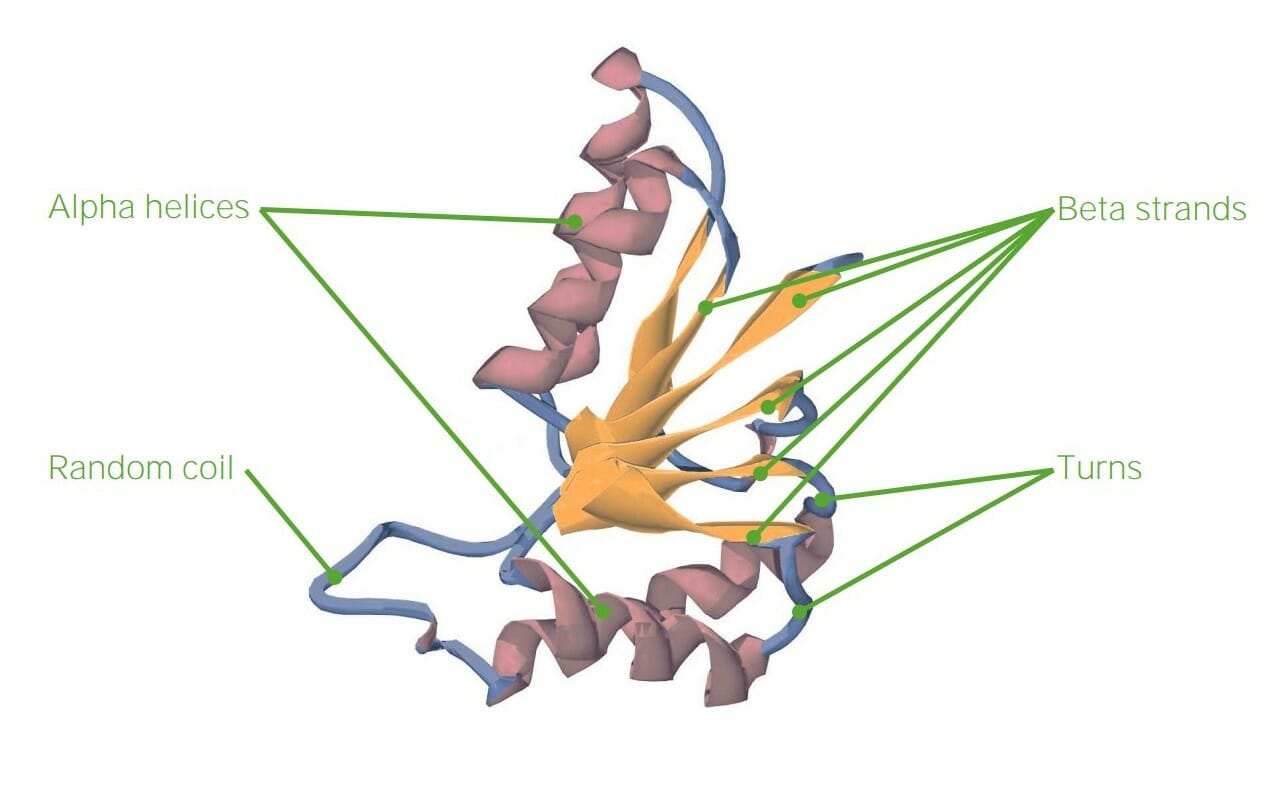Playlist
Show Playlist
Hide Playlist
Polypeptide Chain
-
Slides 05 MacromoleculesII CellBiology.pdf
-
Reference List Molecular and Cell Biology.pdf
-
Download Lecture Overview
00:00 So as we begin our exploration of proteins, let’s recall that the monomers are amino acids, and many monomers are strung together in a chain to form the polypeptide. 00:10 Polypeptide is simply a sequence of amino acids. 00:13 Later on, we’re going to see that these amino acids and sequence will fold into a variety of different shapes. 00:20 But first, let’s take an introduction to the amino acids itself. 00:24 They have particular regions. 00:27 First of all, let’s look at the carbon chain. 00:29 In an amino acid, the carbon chain is extremely short, it’s just one carbon. 00:34 But associated with this carbon are a number of different functional groups. 00:38 First off all, we have the amino group and then, on the other end, we have the carboxyl group and finally, we have the R-group. 00:48 The R-group is the piece of the amino acid that makes it distinct from all other amino acids. 00:55 So for example, if we look at this table, you’ll see that there are a number of different R-groups that give each carboxyl amino central carbon group a distinct characteristic. 01:08 Some of those groups are polar, some of them are non-polar, and some of them are actually charged. 01:15 So as we talked about with water molecules and having a lightly negative end and a slightly positive end, that could distinguish how the protein folds differently. 01:27 So which amino acids are attracted to each other with a positive and negative charge, that strength is even stronger, the attraction is much stronger. 01:36 And of course, uncharged molecules are non-polar and so they do not like to associate with each other. 01:43 So as we move forward, again, we can see that we have amino acids coming together, the monomers coming together through the process of dehydration synthesis, clipping an OH off of one and an H off of the other to release water and covalently bond those two together. 02:02 This covalent bond is called a peptide bond.
About the Lecture
The lecture Polypeptide Chain by Georgina Cornwall, PhD is from the course The Macromolecules of Life.
Included Quiz Questions
What makes each amino acid different from the others?
- R-group attached to the central carbon
- Amino group
- Carboxyl group
- Positions of H-atoms attached to the carbon of the carboxyl group
- Arrangement of H-atoms on the amino group
Customer reviews
5,0 of 5 stars
| 5 Stars |
|
5 |
| 4 Stars |
|
0 |
| 3 Stars |
|
0 |
| 2 Stars |
|
0 |
| 1 Star |
|
0 |




